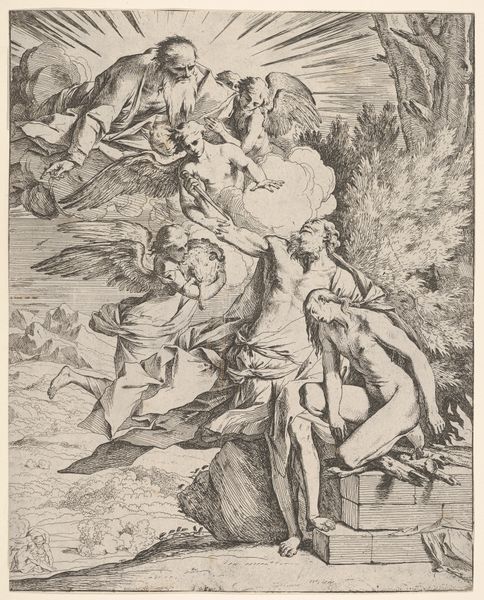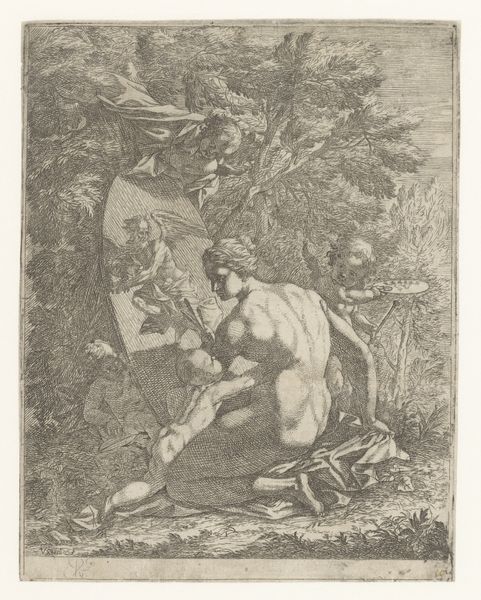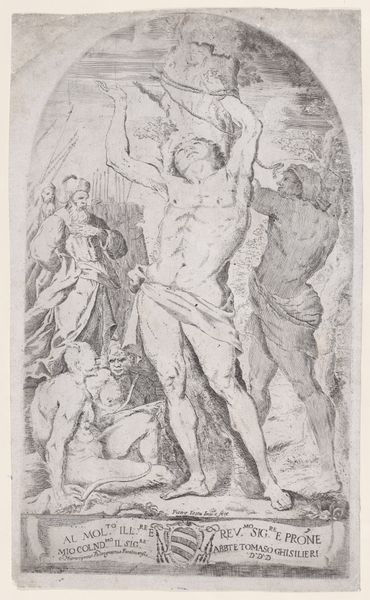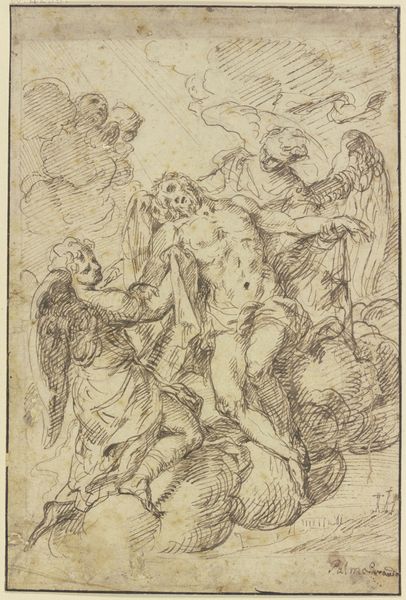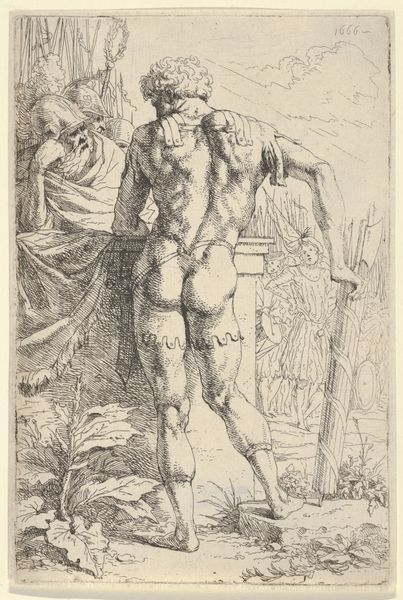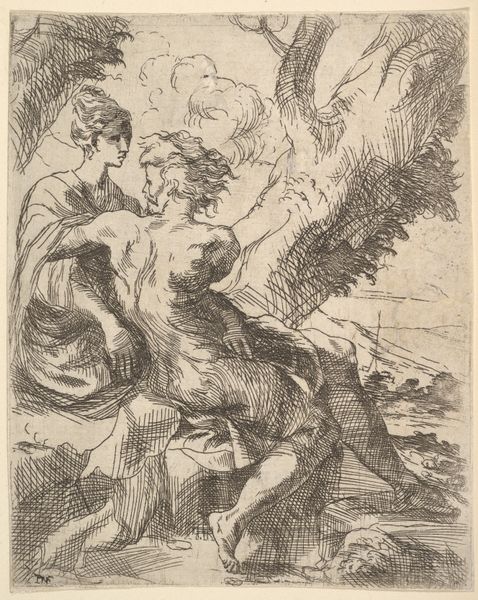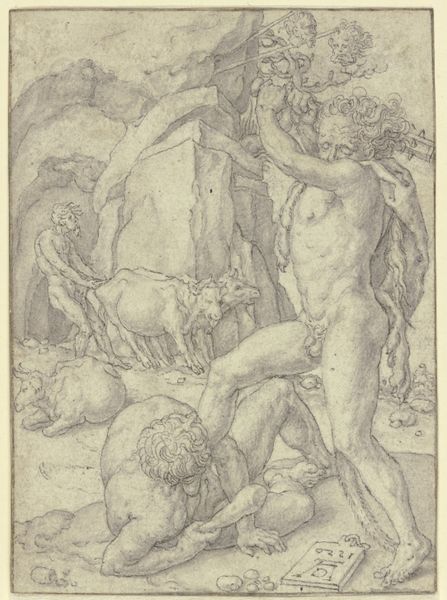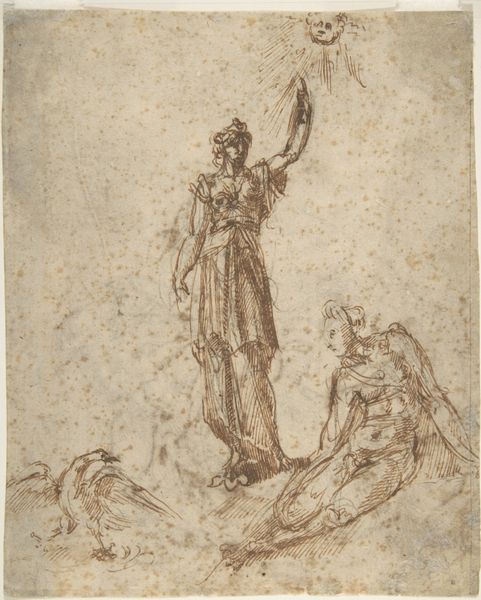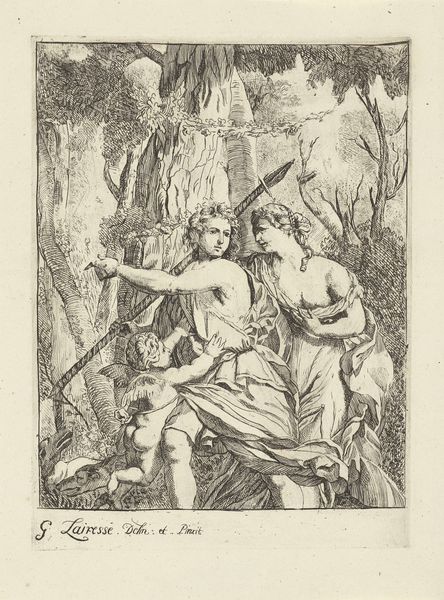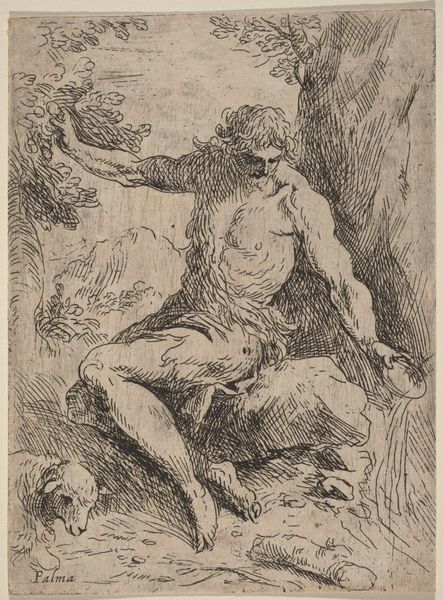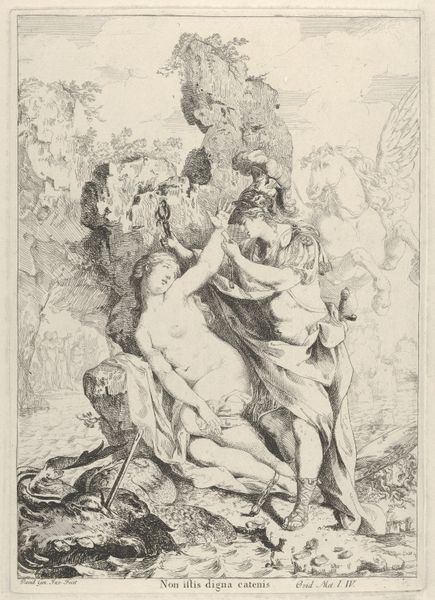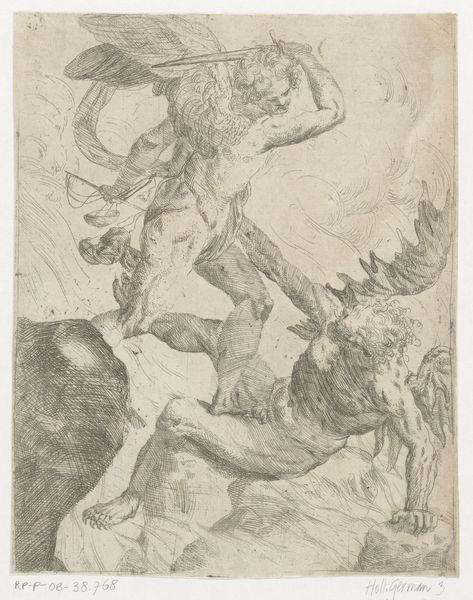
drawing, print, ink
#
portrait
#
drawing
#
allegory
#
baroque
# print
#
figuration
#
ink
Dimensions: Sheet (Trimmed): 10 3/16 × 7 11/16 in. (25.9 × 19.5 cm)
Copyright: Public Domain
Curator: This print, housed here at the Metropolitan Museum of Art, is attributed to Giuseppe Diamantini, dating from approximately 1650 to 1700. It’s entitled “Saturn, Eros, and a Woman”. Editor: My first thought is that it's odd and dark, although it seems ethereal due to the line work. What material was employed here? Curator: The artwork is rendered with ink, through either drawing or printmaking techniques—most likely an engraving or etching. Diamantini often utilized these graphic processes. It allows for precise and reproducible imagery which would appeal to wider audiences beyond wealthy patrons. Editor: The precision is striking. Look at how the thin lines almost build volume. It must have taken immense skill, or even division of labor, to create a printing plate with such complexity. Curator: Indeed. Beyond the materiality, it’s a fascinating piece in its allegorical implications. We have the melancholic figure of Saturn, the Roman god associated with time and reflection, then there is Eros, also know as Cupid. And between them there is a Woman, she is less clearly identified. It is not an incredibly innovative presentation but reflects broader themes of love versus time that permeate Baroque era art. Editor: Yes, I'm really focusing on that woman's pose and expression. She is looking straight forward, unlike the other two that looks like in action. What this pose want to convey to the public? Curator: Exactly! Her steady gaze gives us a hint that she has a role to play in shaping the understanding of our understanding on time and desire and the inevitable clash of mortality, not something that we usually observe on Baroque era images. Diamantini positions her centrally. It places the tension of that central position on her and perhaps invites a contemporary female viewership to find some understanding of their status within it. Editor: It’s a good reminder that we can't divorce these images from the labor and techniques involved in their making, which in turn influenced accessibility and audience. Thank you! Curator: And thank you; it’s enriching to see these historical pieces through a material lens. It definitely changes the viewing experience!
Comments
No comments
Be the first to comment and join the conversation on the ultimate creative platform.
